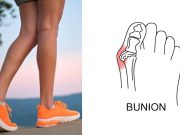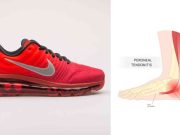Running shoes are something that people spend a lot of money on. People who run regularly tend to have a couple of pairs. But how often do you need to replace your pair? And what should you look out for when buying new shoes? In this blog, we’ll talk about how often to get new running shoes!
Table of Contents
How Long Do Running Shoes Last?
When it comes to shoes for running, the lifespan of running shoes is anywhere between 300-500 miles of Wear. This mileage depends on a few factors, such as the type of shoe, the runner’s body type, and the environment you run in. The type of shoe worn also impacts the lifespan of running shoes.
Heavier runners may find that their shoes wear down faster than lighter runners. Therefore, if you are a heavy runner, you may need to replace your running shoes after around 500-750 kilometers of Wear. Besides mileage, other factors such as sole material and treading can also affect the lifespan of your running shoes.
Signs You Should Replace Your Shoes
When it comes to running shoes, replacing them when they show signs of wear is vital. Here are some of the indications that you should consider replacing your shoes:
– Stretched-out heels or worn more on one side than the other
– Molded foot imprints in the insole of the shoe
– Displaying noticeable creasing in the side or bottom of the sole
– You keep getting blisters or a brush burn
It’s important to note that these signs indicate an issue with your running shoes, not your feet. If you notice any of these issues, check with your local running store and get new shoes as necessary.
Read More: Best Walking Shoes For Overweight Women
01: High Mileage on Your Shoes
It is important to track the miles on your running shoes. Shoes generally last between 300 and 500 miles, so keeping a record of how many miles you have on your shoes is a good idea. This can help you determine when it may be time to replace your shoes. If you experience new discomfort, blisters, or hot spots, it may be time to replace your shoes. Replacing your shoes regularly will ensure they provide the proper support and cushioning for your running style, and pair them with new sneakers as they wear out. It’s always a balance of finding the right shoes that fit comfortably and are designed for the running you do.
02: Poor Shock Absorption
If your running shoes feel worn out, it may be time to replace them. The heels of shoes can wear out over time and start to fit differently than when you first bought them. This may be due to the shoes losing their original shape or the treads on the shoes wearing down. In addition, shoes that are not shock absorbent may cause injury as they do not cushion the impact of every step. If your shoes show Wear and tear, replace them, as they can no longer provide optimal protection for your feet and legs.
03: Pain When Running
Runners often wear out their shoes faster than they can replace them. This can increase the risk of injuries, such as Achilles tendinopathy and plantar fasciitis. Tell-tale signs of needing new shoes include worn-out treads and soles and new aches and pains.
Muscle fatigue, shin splints, and joint pain may be signs of shoes that have lost their cushioning. Blisters and friction burns may indicate that your shoes no longer fit properly. If you experience pain even with relatively new shoes, you may need to consult a running professional to ensure you wear the correct shoes. This will help reduce the risk of injury while running.
04: Worn-Out Treads
When running shoes are worn out, it is a tell-tale sign that they need to be replaced. Worn-out treads on running shoes are a sure sign that the shoes have lost their running performance and cushioning capabilities.
In addition, worn-out treads can indicate that the wrong type of shoes is used for running. Running shoes must be suitable for running and provide cushioning and stability to prevent injuries such as Achilles tendinopathy, plantar fasciitis, and stress fractures. This can often be determined by analyzing a shoe’s gait analysis. When new running shoes are needed, it is important to get a gait analysis done to ensure the right shoe type is used.
05: Uneven Wear
The uneven Wear on the outer edges of your shoe may be a sign of under pronation, which means your foot turns too far inward as you take each step. Overpronation is another common running shoe problem in which your foot turns too far outward as you take each step. This can lead to injuries and other running shoe issues.
If the sole of your shoe is fine, but the sides have worn through, you might need larger shoes, stretch laces, or shoes with a reinforced upper. It’s also important to replace running shoes if they start to feel uncomfortable or if they begin to fail unexpectedly. The midsole of your shoe may feel too soft or collapse under pressure if it becomes worn out over time. If you are experiencing any of these shoe problems, it’s best to replace them as soon as possible.
06: Newer Shoes Feel Better
They are commonly known as running shoes and are designed to provide cushioning and stability for runners during their workouts. They come in various styles and sizes, from running shoes for women to running shoes for men. Shoes worn out often need to be replaced as they lose their performance and support over time.
However, runners should replace their shoes regularly, depending on the type of shoe and how often they run. Overpronators may need to replace their shoes more often than neutral runners, as these tend to wear out faster. Additionally, new running shoe technology offers additional features such as cushioning or stability, allowing runners to find the pair that best suits their needs.
07: Try the Twist Test
The Twist Test is a way to determine if it is time to replace shoes. To do the test, hold the shoe at both ends and twist it to see if it is firm. High-quality running shoes will typically fail this test right out of the box.
These shoes are lightweight and made for speed rather than durability. Instead, seek out shoes built for support and comfort, and ensure you wear them regularly to get the longest wear possible. So if your running shoes show signs of wear, you should consider replacing them. It is always better to be safe than sorry about your health and safety!
In addition to wearing out your shoes quickly, high temperatures and moisture can also damage shoes making them more likely to fail the test. So ensure you stay cool and dry whenever possible. Besides, healthy shoes should last much longer than those that are not in good shape, so you’ll want to replace your pair as soon as possible if they begin showing any signs of wear or tear.
How to Extend the Life of Running Shoes
– Rotate multiple pairs of quality shoes to distribute the stress of running and extend their life.
– Dry out shoes after they get wet to keep them in top shape.
– Replace running shoes after 300-500 miles or when the treads are worn out.
– Use the right shoe for the right purpose (walking, hiking, running) to extend their life.
In general, running shoes are meant for running, not walking or hiking, so it’s important to use shoes designed for that purpose. When determining which pair of shoes is best for you, consider factors such as shoe type (running vs. walking), shoe fit (snug vs. roomy), and shoe durability (the shoe that’s meant to last a few miles vs. shoe designed for shorter distances).
Also, consider your running style, such as whether you prefer midsole cushioning or lightweight shoes if you prefer arch support or ankle support, and anything else that may impact your running experience. By following these tips and using quality shoes as intended, you can extend the life of your favorite pair of running shoes and enjoy them for miles to come.
How Many Miles Do Running Shoes Last?
– If you’re running regularly, most running shoes should last between 300 and 500 miles, roughly 4 to 6 months for someone running 20 miles per week. This number depends on terrain, weight, foot strike, and running mechanics.
– High-quality running shoes should last between 300 and 500 miles. However, shoe durability can be compromised by frequent Wear of broken-in shoes, use of outsole materials other than traditional rubber, and wearing out of the shoe’s midsole.
– Using running shoes for non-running activities can also affect their lifespan. Racing shoes are designed to be lighter and faster and last fewer miles than running shoes. Race-day shoes are best for shorter distances and low-impact activities as they are intended to be worn only once or twice.
In general, the lifespan of running shoes is affected by how well they are cared for and how often they are worn.
How to Tell if Running Shoes are Worn Out
Track your running mileage and use the date of purchase as a guide to determine when to replace your shoes. Shoe lifespan is usually 300-500 miles or 3-6 months of running if running 20 miles per week. Look for worn-out treads on the shoes’ soles, indicating the need for new shoes. The tread of a shoe is designed to wear out predictably as it takes repeated contact with the ground.
This is why shoes often have distinct “tread lines” on the sole that show where different tread patterns are used. That way, you can tell if your shoes are no longer usable and need to be replaced. Check for worn-out heels and holes inside/outside the shoe as a sign to replace them. Over time, shoes can become susceptible to Wear and tear, which can cause holes in the heel or outside of the shoe. If you notice these signs, it’s time to get new shoes.
Runners who tend to overpronate (elevate their feet) or those who participate in long-distance running will need to replace their shoes more often than others.
Read More :
01: What to look for in running shoes?
02: What to do with old running shoes?
03: What is a neutral running shoe?
04: What is a drop in running shoes?
05: What is a Stability Running shoe?
06: How long do running shoes last?
Frequently Asked Questions
How often should running shoes be replaced?
If you often run, replacing your running shoes every 300-400 miles is best. This is because running shoes wear out over time and can cause injuries such as Achilles tendinopathy and plantar fasciitis. Additionally, running shoe treads tend to wear down faster than other types of shoes, so a new pair of running shoes should be bought every 200 miles or so. Running marathons or running a lot each week may mean that you need new shoes sooner than someone who runs fewer miles each week.
How long do running shoes last?
Running shoes typically last 300 to 500 miles of usage. The number of miles a running shoe lasts can vary drastically with factors such as weight, foot strike, and running mechanics. Mileage is the biggest factor determining when a running shoe needs to be replaced. Lightweight minimalist shoes typically last 250 to 300 miles. Super shoes with carbon fiber plates may last even less than that.
How long should shoes last?
Shoes typically last between 300 to 500 miles, which is approximately four to six months for someone who runs 20 miles a week. Lighter minimalist shoes may only last 250 to 300 miles, while more cushioned shoes with a carbon fiber plate could last even less. Heavier runners may also find their shoes wearing down faster than lighter runners. External signs such as worn-out treads, visible beat-up bottom or sides, and wrinkling midsoles are indicators that it may be time to replace your shoes.
How Often to Replace Your Running Shoes?
Most running shoe brands suggest replacing shoes every 300-500 miles. So, if you run 500 miles a year, you would replace your shoes every 2-3 pairs.
Sandals and flip-flops do not require shoes to be replaced as they do not provide cushioning or support. To best protect your feet while out running in these shoes, it is recommended to periodically soak them in water or pour white vinegar over them to keep them clean and free of infection.
Conclusion
As you can see, running shoes undergo several changes in their lifespan. They must be replaced periodically, and new shoes are designed to replace the old ones as they wear out. In addition to that, new shoes also provide shock absorption and cushioning as they get worn out. If you’re looking for new running shoes, try using the above tips to ensure new shoes are running smoothly. Besides, you can also opt for running shoe inserts to help keep your running shoe cushioning comfortable.
































